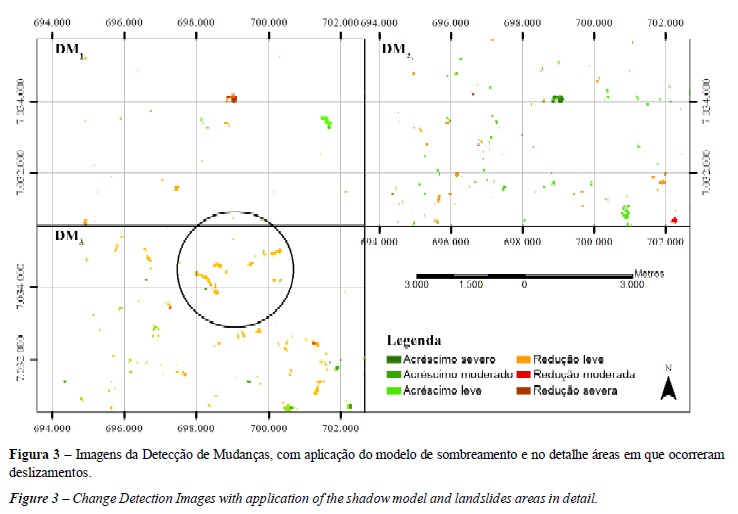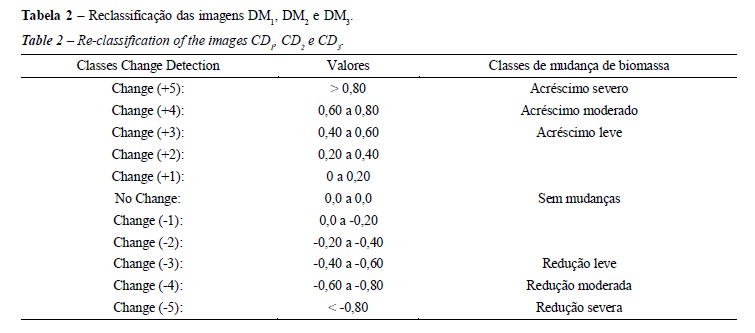The use of satellite images has been very effective for monitoring the dynamics of the land use and occupation over time. For this purpose , the change detection techniques have been strong allies. These techniques have multiple complexities depending on the objective to be achieved. This study aims to evaluate the technique for land use and land cover changing detection in areas affected by the environmental disaster of November 2008 in the region of Morro do Baú, Santa Catarina, Brazil. A total of 04 (four) images from different dates between 1992 and 2009 (post-disaster) were used. The images were processed in vegetation index using bands 7 and 4 in order to minimize atmospheric and radiometric distortions. Shadow mask, construted from the digital terrain model, was developed to avoid false changes caused by shade. It was concluded that the georeferencing must be very accurate in applying these techniques. The vegetation index by using bands 7 and 4and the shadow mask, were effective in minimizing false changes. It showed that the techniques applied are effective to detect changes in areas affected by the disaster.
Itajaí wattershed; land use monitoring; landslides






